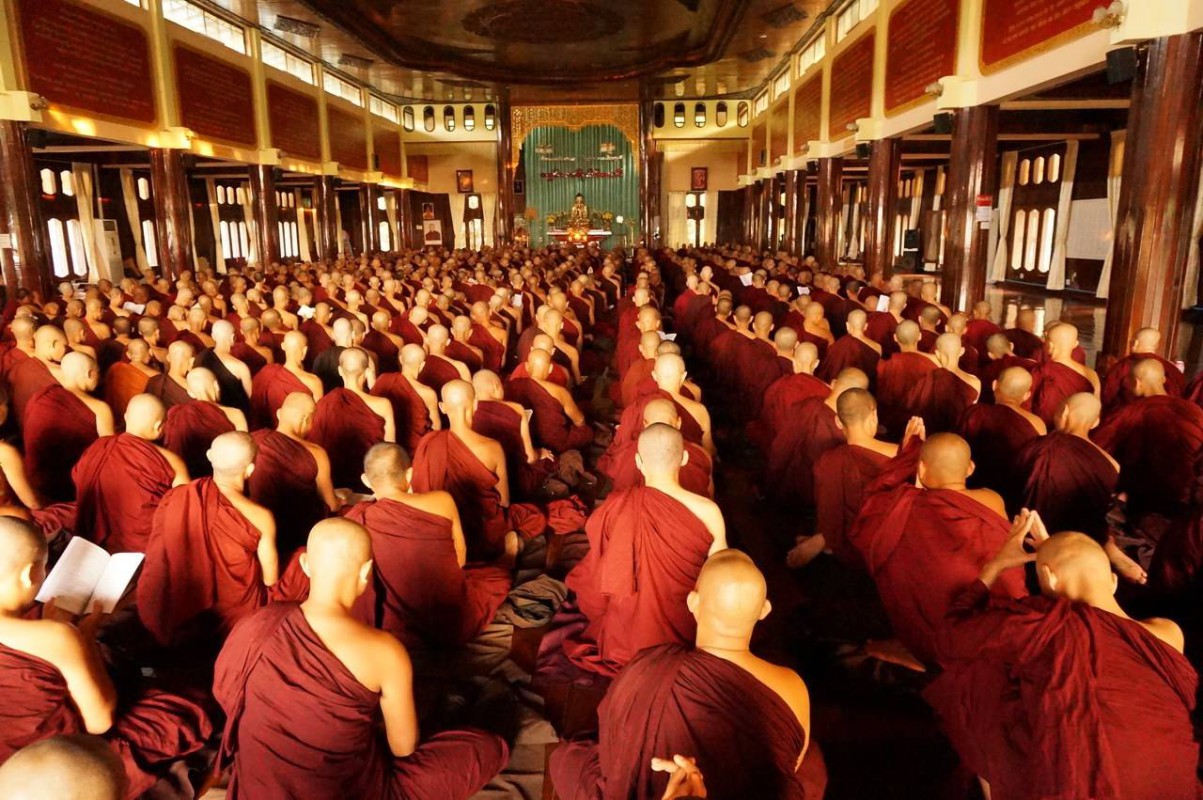Myanmar: The land with shimmering golden pagodas

643

Thiri Khit Oo (NP News) - Sep 14
For centuries, Myanmar has been renowned as a land of shimmering pagodas and rich Buddhist traditions. The practice of constructing ornate religious edifices, including Buddha stupas, pagodas, temples, and gold-adorned statues, dates back to the Bagan Kingdom era. These sacred structures often house relics and precious jewelry, symbolizing the deep devotion of the people to their faith. Ancient Myanmar literature poetically describes the country as a "golden land," where "pagodas shimmer everywhere. This profound connection to Buddhism has shaped Myanmar's cultural and spiritual identity, passed down through generations. On religious days, Myanmar Buddhists flock to pagodas and temples to offer alms, flowers, scents, lights, and water to Buddha stupas as a token of gratitude for the Buddha's guidance towards inner peace and enlightenment. This spirit of generosity extends beyond temple offerings, with many Buddhists engaging in charitable acts such as donating food to monks, providing meals for the poor, and volunteering to clean public spaces. The recitation of the Buddha's Dhamma echoes through religious buildings and monasteries, while the ringing of bells signifies good deeds, believed to resonate all the way to heaven.
Buddhism in Myanmar is centered on the teachings of karma and reincarnation, emphasizing the cyclical nature of cause and effect and the belief in rebirth. To attain inner peace, devotees strive to eradicate greed, hatred, and ignorance, ultimately aiming for Nirvana, a state of liberation from the cycle of death and rebirth.
In addition, Buddhists must adhere to the Five Precepts: refraining from taking life, stealing, sexual misconduct, false speech, and intoxicants. These precepts form the foundation of the Buddha’s teachings, guiding individuals toward lifelong inner peace and enlightenment.
Dating back to 624 BC, Shin Ananda, the Buddha's first cousin, meticulously recorded the Dhamma in written form after the Buddha's passing. These texts or copies were disseminated throughout Myanmar via trade routes from India and China. In the 11th century, King Anawrahta invited Venerable Shin Arahan and was the first to hear the Buddha's teachings as preached by him. During Anawrahta's reign, Shin Arahan became the chief religious advisor to the Bagan Empire. The profound and enlightening nature of the Buddha's Dhamma, which brought inner peace, led to the widespread adoption of Theravada Buddhism across the Bagan Empire. As historical accounts attest, "The powerful king's support greatly helped stabilize the Buddhist school, which had previously been in decline in other parts of South and Southeast Asia."
The enduring influence and stability of Buddhism during the Bagan era solidified its prominence in Myanmar. As a testament to the people's devotion, pagodas, temples, and statues adorned with gold and precious relics were constructed. Today, these historical structures serve as a reminder of Myanmar's enduring Buddhist faith.
Given the profound influence and benefits of Buddhism, it is unsurprising that the people of Myanmar embraced the faith. Pagodas, Buddha temples, stupas, and statues were constructed and adorned with gold, relics, jewelry, and gems, serving as enduring symbols of the people's faith. Buddhism has long been the predominant religion in Myanmar, and throughout successive eras, Myanmar Buddhists have peacefully practiced their faith without disparaging other religions, a tradition that continues to this day.
Visitors to Myanmar can immerse themselves in the country's rich Buddhist heritage by exploring its iconic pagodas and temples. The ancient city of Bagan, in particular, boasts thousands of historical religious sites. Other renowned landmarks include the Shwedagon Pagoda, Maha Myat Muni Temple, Kuthodaw Pagoda (home to the world's largest book of the Dhamma), Shwe Mawdaw, Shwe Sandaw, and Mara Vijara Buddha Stupa, the world's largest marble Buddha stupa.
Myanmar's unwavering devotion to Buddhism has endured for centuries. The country remains a beacon of peaceful religious practice, with its golden pagodas and temples serving as enduring symbols of faith, resilience, and spiritual enlightenment.